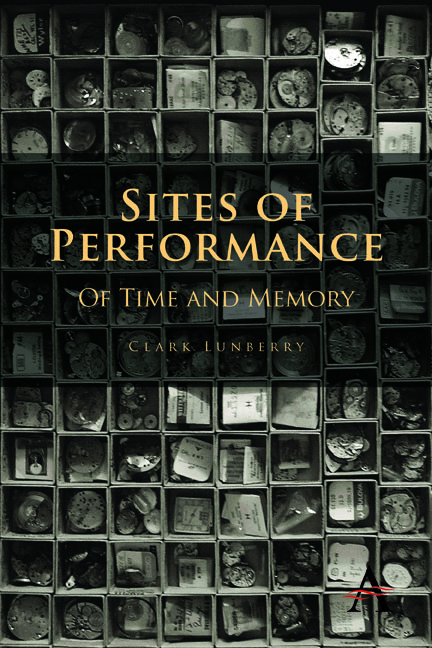Book contents
- Frontmatter
- Dedication
- Contents
- Acknowledgements
- Preface
- I Stagings: Plays of Space
- II Sightings: Sites of Time
- Chapter 5 Antonin Artaud's Unending Death Rattle
- Chapter 6 Writing upon Theaters of Tragic Thought
- Chapter 7 Figures of Speech: Ann Hamilton's Installations of Absence
- Chapter 8 Illuminated Theater: The Stages of James Turrell
- Chapter 9 Suspicious Silence: Walking Out on John Cage
- Chapter 10 In Living Memory: Morton Feldman's Departing Landscapes
- Postscript Seeing in Plain Sight—Installations in Flight
- Bibliography
- Index
Chapter 8 - Illuminated Theater: The Stages of James Turrell
from II - Sightings: Sites of Time
Published online by Cambridge University Press: 05 November 2014
- Frontmatter
- Dedication
- Contents
- Acknowledgements
- Preface
- I Stagings: Plays of Space
- II Sightings: Sites of Time
- Chapter 5 Antonin Artaud's Unending Death Rattle
- Chapter 6 Writing upon Theaters of Tragic Thought
- Chapter 7 Figures of Speech: Ann Hamilton's Installations of Absence
- Chapter 8 Illuminated Theater: The Stages of James Turrell
- Chapter 9 Suspicious Silence: Walking Out on John Cage
- Chapter 10 In Living Memory: Morton Feldman's Departing Landscapes
- Postscript Seeing in Plain Sight—Installations in Flight
- Bibliography
- Index
Summary
One of the most urgent tasks for contemporary thought is, without doubt, to redefine the concept of the transcendental in terms of its relation with language. For if it is true that Kant was able to articulate his concept of the transcendental only by omitting the question of language, here ‘transcendental’ must instead indicate an experience which is undergone only within language, an experimentum linguae in the true meaning of the words, in which what is experienced is language itself.
—Giorgio Agamben, Infancy and History (5)If Ann Hamilton's installations offered us rooms within which to imagine our own absence, theatrical spaces where the diminished events implicated its spectators in their rich emptiness, another contemporary artist, James Turrell, engages similar issues but through the singular medium of light, seeking what the artist describes as the silence of “wordless thought.” However, recalling John Cage's time in the anechoic chamber (to which we will once more return), such silence is often much easier to imagine than to achieve. For, even when light is all that remains, the words that arise from within such a scene, as if out of that light, seem inevitably to continue to sound their murmuring presence. What, then, is to be done with these luminous words, in the anechoic sounding of this newest of illuminated chambers?
- Type
- Chapter
- Information
- Sites of PerformanceOf Time and Memory, pp. 103 - 118Publisher: Anthem PressPrint publication year: 2014



